Numerical Simulation Research on Plane Alignment Parameters of Desert Highway
Abstract
:1. Introduction
2. Numerical Simulation
2.1. Model Description
2.2. Numerical Method
2.3. Boundary Conditions and Computational Mesh
2.4. Reliability Verification
3. Results and Analysis
3.1. Analysis of the Results of the Angle Embankment Model
3.1.1. Distribution Characteristics of the Wind–Sand Flow Field
3.1.2. Characteristics of Horizontal Wind Speed Distribution
3.1.3. Distribution Characteristics of Sand Accumulation on Embankment
3.2. Analysis of the Results of the Flat-Curve Embankment Model
3.2.1. Distribution Characteristics of the Wind–Sand Flow Field
3.2.2. Characteristics of Horizontal Wind Speed Distribution
3.2.3. Distribution Characteristics of Sand Accumulation on the Embankment
4. Field Verification
5. Conclusions
Author Contributions
Funding
Institutional Review Board Statement
Informed Consent Statement
Data Availability Statement
Conflicts of Interest
References
- Okin, G.S.; Gillette, D.A.; Herrick, J.E. Multi-scale controls on and consequences of aeolian processes in landscape change in arid and semi-arid environments. J. Arid Environ. 2006, 65, 253–275. [Google Scholar] [CrossRef]
- Wang, T. Progress in sandy desertification research of China. J. Geogr. Sci 2004, 14, 387–400. [Google Scholar]
- Zhong, D.C. Dynamic Evolution of China’s Sand Sea; Gansu Culture Press: Lanzhou, China, 1998. [Google Scholar]
- Han, Z.W.; Wang, T.; Sun, Q.W.; Dong, Z.; Wang, X. Sand harm in Taklimakan Desert highway and sand control. J. Geogr. Sci. 2003, 13, 45–53. [Google Scholar] [CrossRef]
- Lei, J.Q.; Wang, X.Q.; Wang, D.; Zhou, C.; Xia, X. The blown sand disaster to the Tarim Desert Highway in Xinjiang, China. Sci. China Ser. D Earth Sci. 2002, 45, 165–173. [Google Scholar] [CrossRef]
- Ling, L.; Wu, H.X. Expressway Traffic Safety Analysis. Highw. Transp. Sci. Technol. 2003, S1, 123–126. [Google Scholar]
- Wang, F.; Li, X.G.; Guo, H.; Hu, J. Optimization of straight segment index between highway curves of desert grassland based on driver’s visual interest region. J. Jilin Univ. 2020, 50, 114–120. [Google Scholar]
- Tong, S.J.; Wang, P. Analysis of Minimum Radius of Circular Curve under Influence of Different Elevations and Different Levels of Wind for High Grade Highways. Highway 2012, 12, 61–64. [Google Scholar]
- Zhou, H.Z. Research on the Alignment Parameters of the Expressway in the Gobi Desert Area of Qinghai Province; Chang’an University: Xi’an, China, 2011. [Google Scholar]
- Zakeri, J.A.; Maryam, F. Railway route design in desert areas. Am. J. Environ. Eng. 2012, 2, 13–18. [Google Scholar] [CrossRef]
- Jabbar, A.Z. Investigation on railway track maintenance in sandy-dry areas. Struct. Infrastruct. Eng. 2012, 8, 135–140. [Google Scholar]
- Shi, L.; Wang, D.Y.; Li, K.C. Windblown sand characteristics and hazard control measures for the Lanzhou–Wulumuqi high-speed railway. Nat. Hazards 2020, 104, 353–374. [Google Scholar] [CrossRef]
- Zu, R.P.; Xue, X.; Qiang, M.R.; Yang, B.; Qu, J.; Zhang, K. Characteristics of near-surface wind regimes in the Taklimakan Desert, China. Geomorphology 2008, 96, 39–47. [Google Scholar] [CrossRef]
- Li, X.; Chu, Y.C. Route selection and treatment of Shapotou Desert, the first desert railway in China-Baolan Line. J. Railw. Eng. Soc. 2005, S1, 173–176. [Google Scholar]
- Feng, D.Q. Route Selection of the Korla-Golmud Railway in Storm Sand Area. Railw. Eng. 2012, 6, 110–113. [Google Scholar]
- Ma, S.J. Study on Route Selection of Hotan-Ruoqiang Railway in Windblown sand area. Railw. Eng. 2021, 61, 139–143. [Google Scholar]
- Scanlan, R.H. The action of flexible bridges under wind, II: Buffeting theory. J. Sotmd Vib. 1978, 60, 201–211. [Google Scholar] [CrossRef]
- Song, Y.; Zhang, M.; Øiseth, O.; Rønnquist, A. Wind deflection analysis of railway catenary under crosswind based on nonlinear finite element model and wind tunnel test. Mech. Mach. Theory 2022, 168, 104608. [Google Scholar] [CrossRef]
- Jun, Y.; Li, Q.S. Wind tunnel and full-scale study of wind effects on a super-tall building. J. Fluids Struct. 2015, 58, 236–253. [Google Scholar]
- Cheng, J.J.; Lei, J.Q.; Li, S.Y.; Wang, H.F. Effect of hanging-type sand fence on characteristics of wind-sand flow fields. Wind Struct. 2016, 22, 555–571. [Google Scholar] [CrossRef]
- Janardhan, P.; Narayana, H. Numerical modelling of shelter effect of porous wind fences. Wind Struct. 2019, 29, 313–321. [Google Scholar]
- Ke, S.T.; Dong, Y.F.; Zhu, R.K.; Wang, T. Wind-sand coupling movement induced by strong typhoon and its influences on aerodynamic force distribution of the wind turbine. Wind Struct. 2020, 30, 433–450. [Google Scholar]
- Zhang, Y.N.; Jiang, C.; Zhan, X.H. Modelling the multi-physics of wind-blown sand impacts on high-speed train. Wind Struct. 2021, 32, 487–499. [Google Scholar]
- Paz, C.; Suarez, C.; Gil, C.; Concheiro, M. Numerical study of the impact of windblown sand particles on a high-speed train. J. Wind Eng. Ind. Aerodyn. 2015, 145, 87–93. [Google Scholar] [CrossRef]
- Guo, Z.J.; Liu, T.H.; Chen, Z.W.; Liu, Z.; Monzer, A.; Sheridan, J. Study of the flow around railway embankment of different heights with and without trains. J. Wind Eng. Ind. Aerodyn. 2020, 202, 104203. [Google Scholar] [CrossRef]
- Wu, S.Z.; Liu, N.; Bo, T.L. Numerical Simulation and Wind Tunnel Experiment of Flow Field near the Highways. J. Lanzhou Univ. 2008, 4, 27–34. [Google Scholar]
- Li, C.; Gao, Y.; Huang, H. Numerical Simulation of Wind Erosion Damage Rules for Desert Highway. Rock Soil Mech. 2011, 32, 642–647. [Google Scholar]
- Shi, L.; Jiang, F.Q.; Han, F. Numerical Simulation of Response Law of Wind-blown Sand Flow around the Railway Embankment. J. China Railw. Soc. 2014, 36, 82–87. [Google Scholar]
- Xin, G.W.; Cheng, J.J.; Yang, Y.H. Study on Effect of Characteristics of Hanging-type Concrete Sand Barrier Opening and Wind-sand Field. J. China Railw. Soc. 2016, 38, 99–107. [Google Scholar]
- Xu, J.G.; Huang, N.; Shi, G.T.; Zhang, X.A. Numerical Simulation of Wind-sand Flow field of Railway Gentle Embankment. J. Lanzhou Jiaotong Univ. 2021, 40, 78–85. [Google Scholar]
- Xu, B.; Zhang, J.; Huang, N.; Gong, K.; Liu, Y. Characteristics of Turbulent Aeolian Sand Movement Over Straw Checkerboard Barriers and Formation Mechanisms of Their Internal Erosion Form. J. Geophys. Res. Atmos. 2018, 123, 6907–6919. [Google Scholar] [CrossRef]
- Li, X.J.; Jiang, F.Q. Numerical Simulation Analysis of Response Law of Wind-blown Sand Flow around Wind-break Wall in Gobi Area. Railw. Stand. Des. 2016, 60, 47–51. [Google Scholar]
- Xin, G.W.; Huang, N.; Zhang, J.; Dun, H. Investigations into the design of sand control fence for Gobi buildings. Aeolian Res. 2021, 49, 100662. [Google Scholar] [CrossRef]
- Zhang, K.; Qu, J.J.; Zhang, X.X.; Zhao, L.; Li, S. Protective Efficiency of Railway Arbor-Shrub Windbreak Forest Belts in Gobi Regions: Numerical Simulation and Wind Tunnel Tests. Front. Environ. Sci. 2022, 10, 885070. [Google Scholar] [CrossRef]
- Zhang, K.; Tian, J.J.; Qu, J.J. Sheltering effect of punched steel plate sand fences for controlling blown sand hazards along the Golmud-Korla Railway: Field observation and numerical simulation studies. J. Arid Land 2022, 14, 604–619. [Google Scholar] [CrossRef]
- Mahgoub, A.O.; Ghani, S. Numerical and Experimental Investigation of Utilizing the Porous media Model for Windbreaks CFD Simulation. Sustain. Cities Soc. 2021, 65, 102648. [Google Scholar] [CrossRef]
- Wang, H.; Takle, E.S. A Numerical Simulation of Boundary-Layer Flows Near forest Belts. Bound. Lay Meteorol. 1995, 75, 141–173. [Google Scholar] [CrossRef]
- Xin, G.W.; Huang, N.; Zhang, J. Wind-tunnel experiment on sand deposition mechanism and optimal measures of wind-break wall along railway in strong wind area. Chin. J. Theor. Appl. Mech. 2021, 52, 635–644. [Google Scholar]
- Fryberger, S.G. Dune form and wind regime. US Geol. Surv. Prof. Pap. 1979, 1052, 137–169. [Google Scholar]
- Zhang, K.C.; An, Z.S.; He, M.Z.; Zhang, L.Y.; Wang, J.G.; Hou, Y.G. Aeolian sand environments and disaster prevention along Zhongwei section of the Wuhai-Maqin Highway. Arid Land Geography. 2021, 44, 983–991. [Google Scholar]

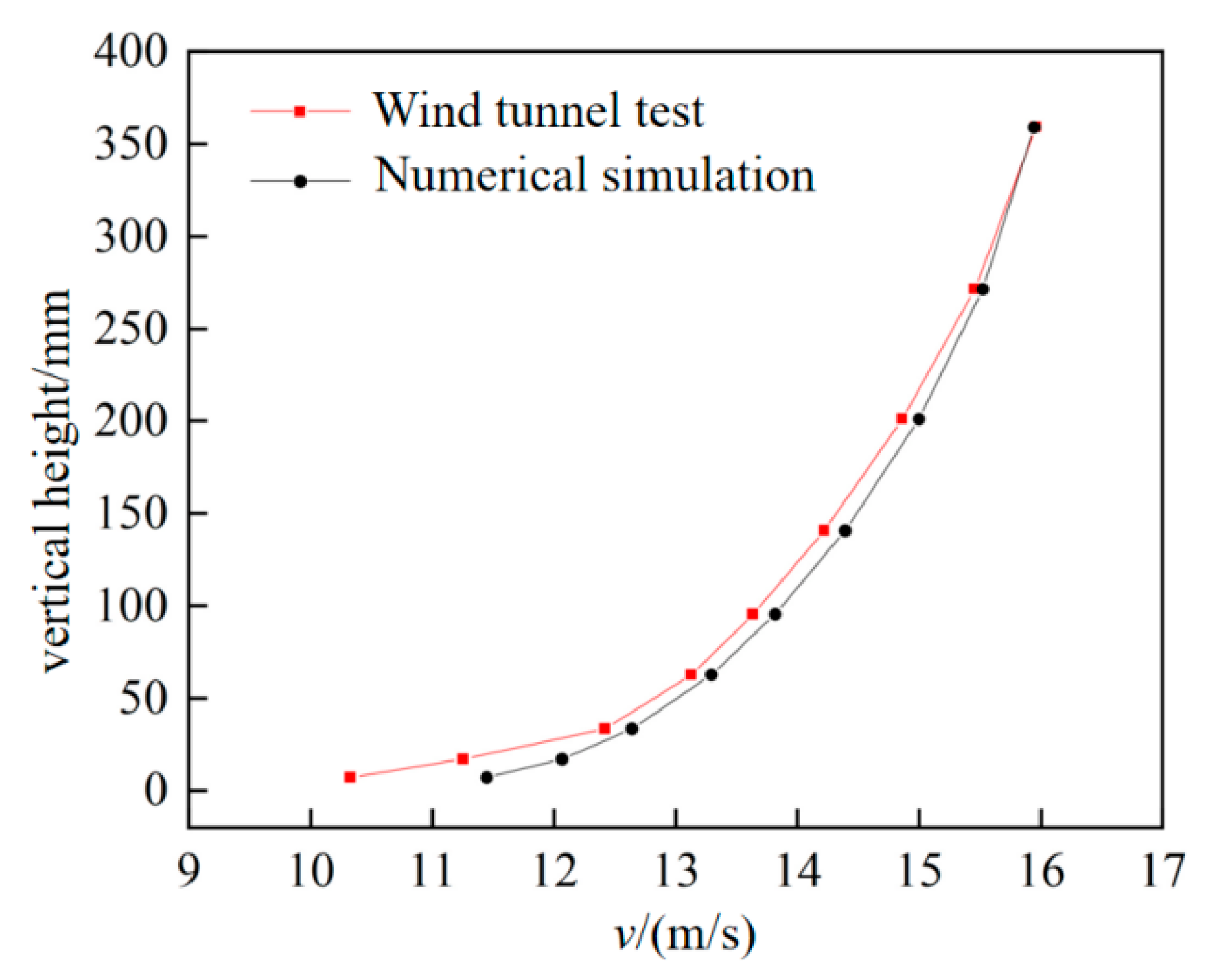

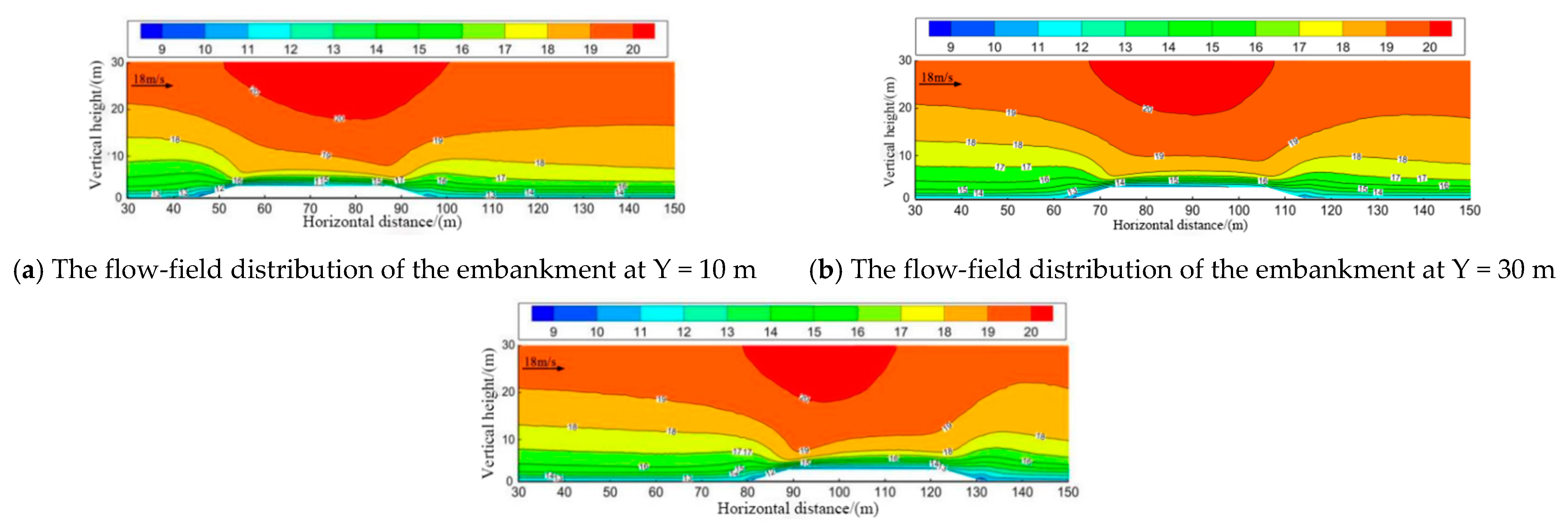

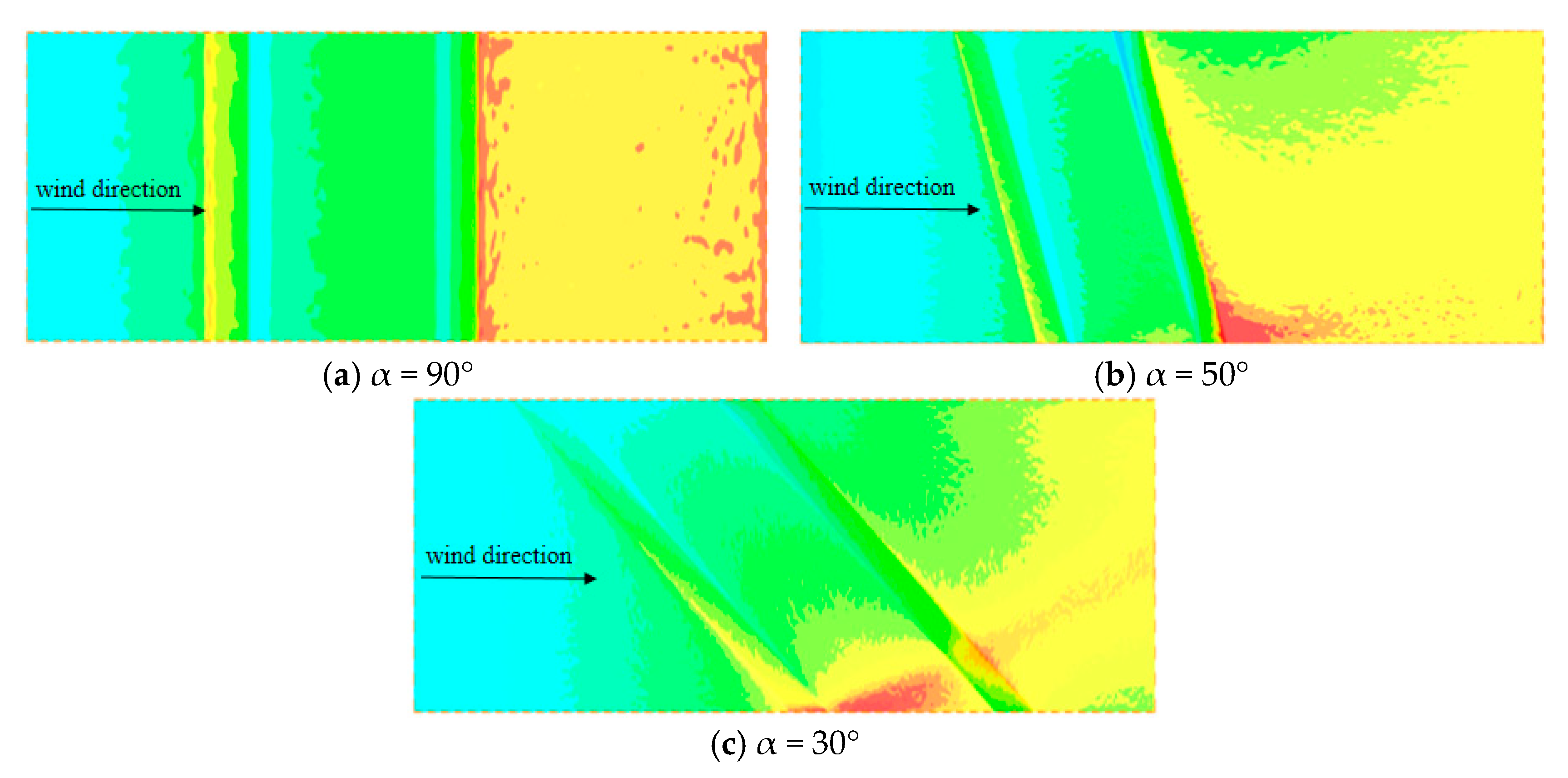
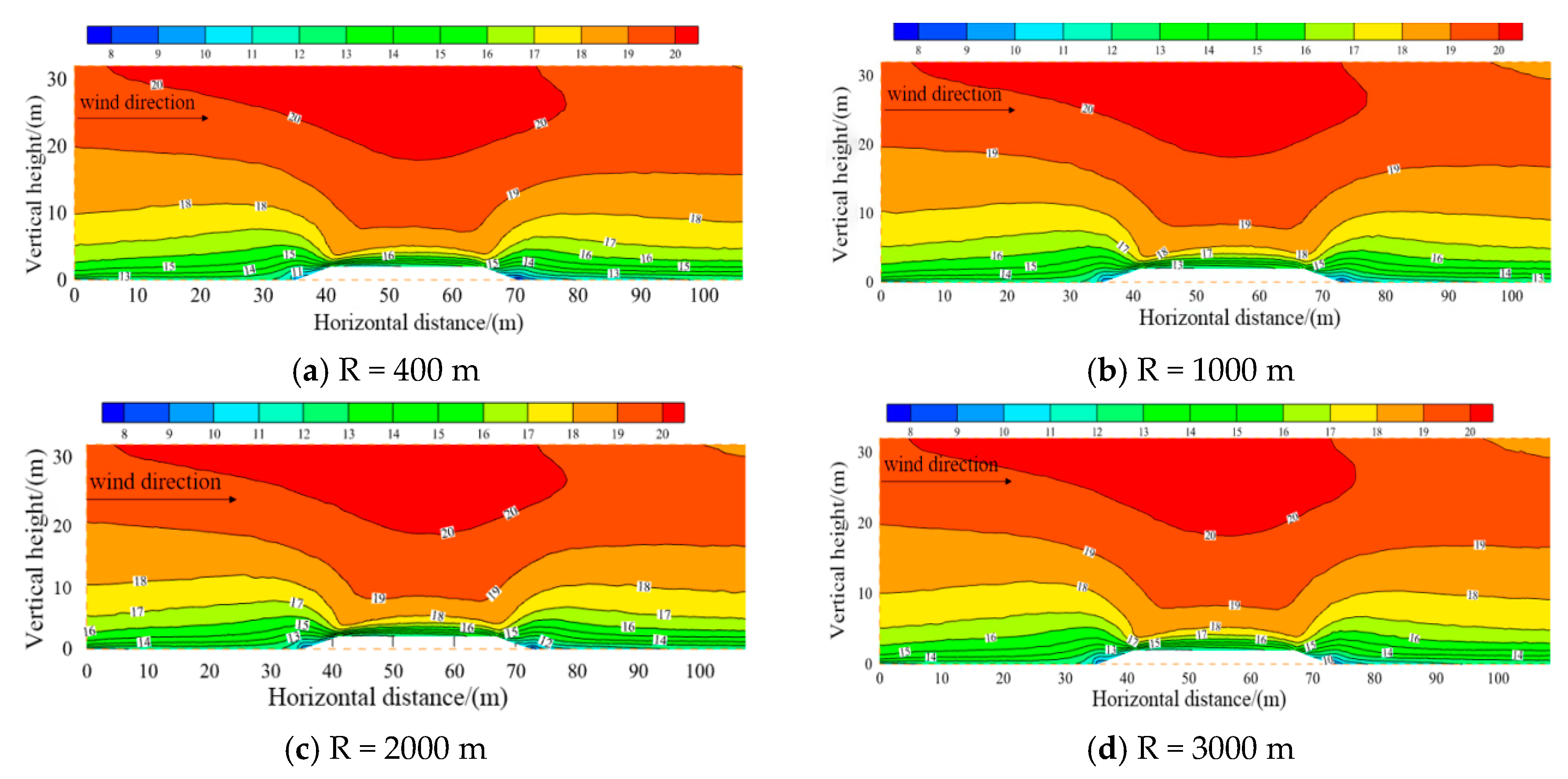


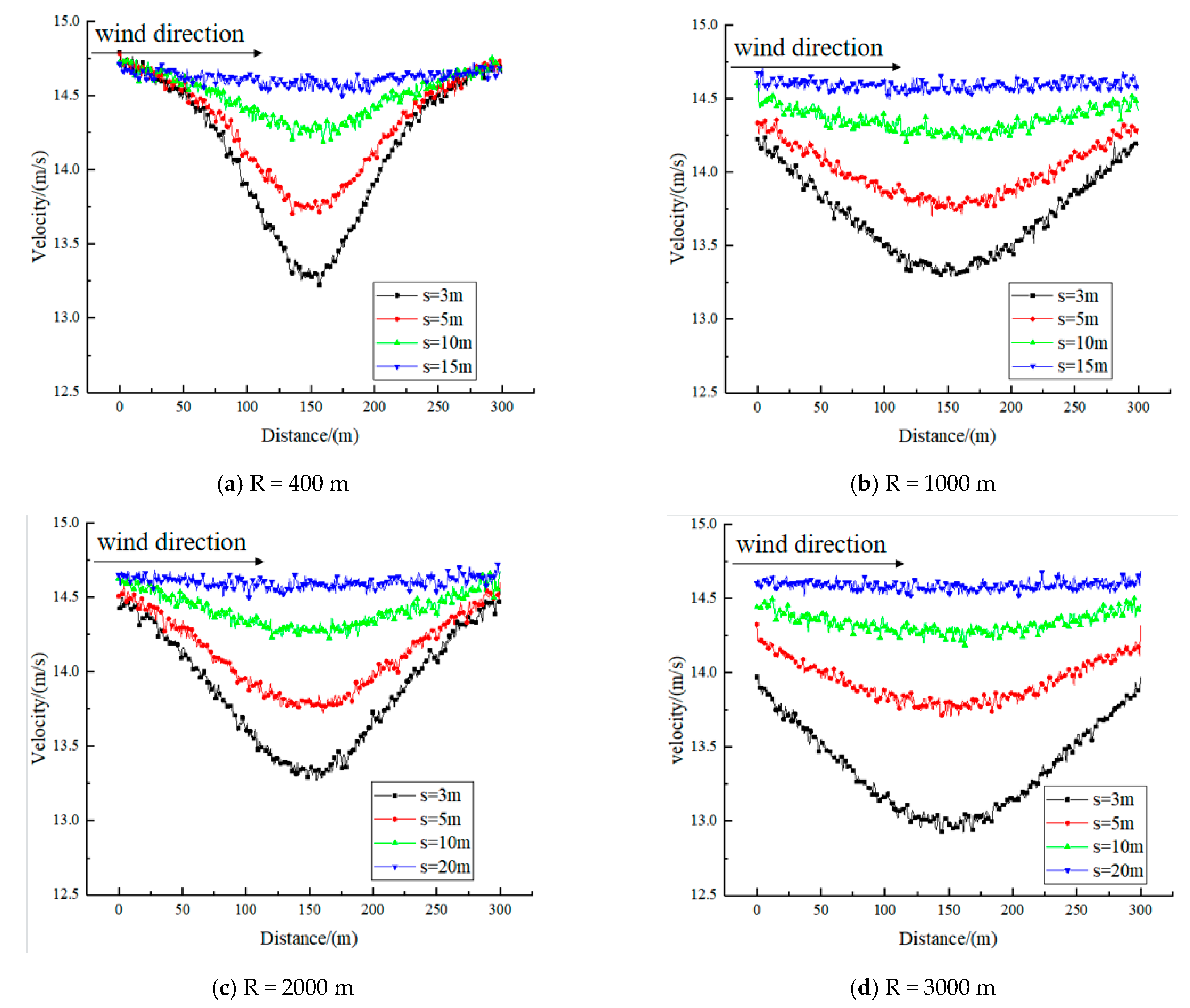

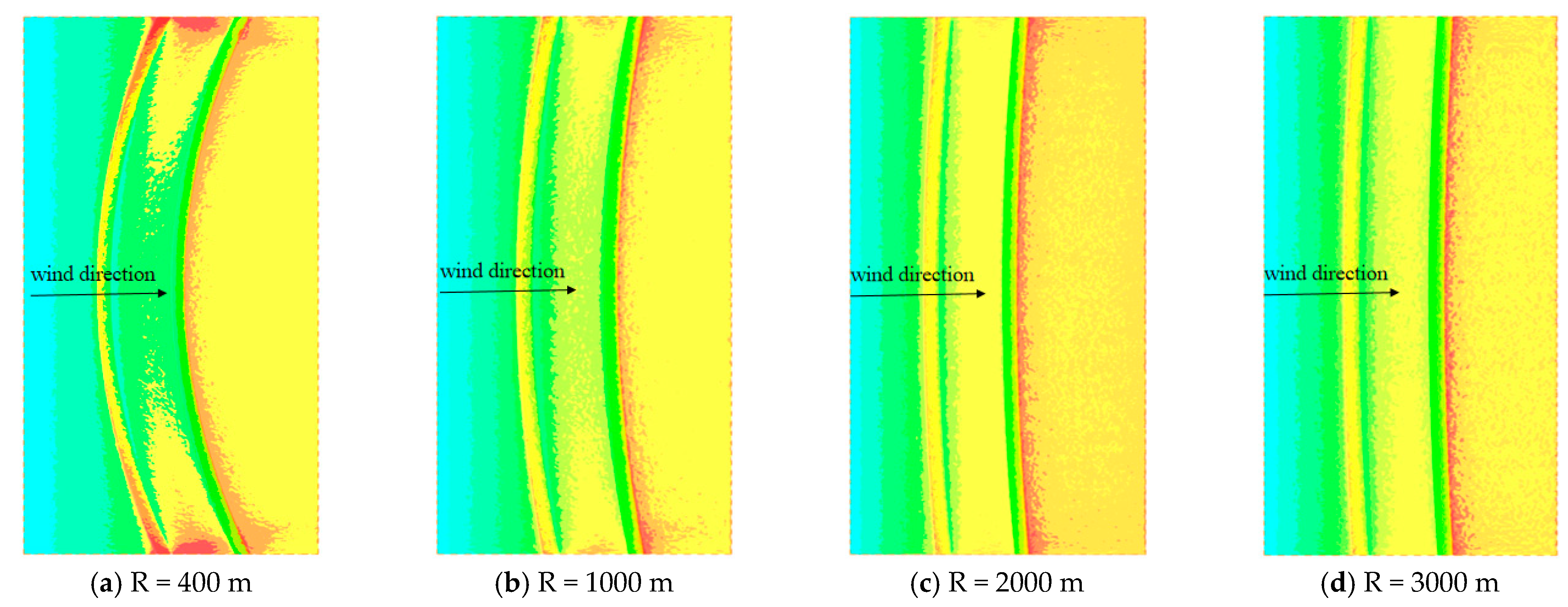
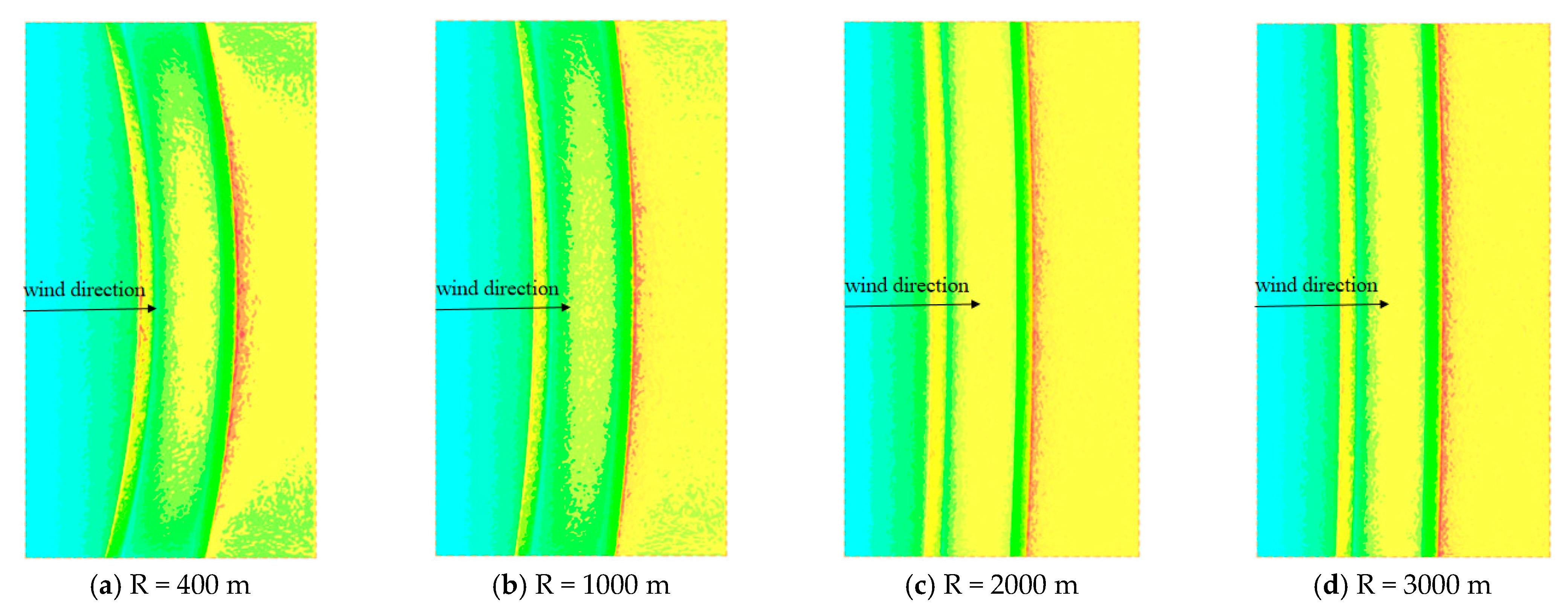
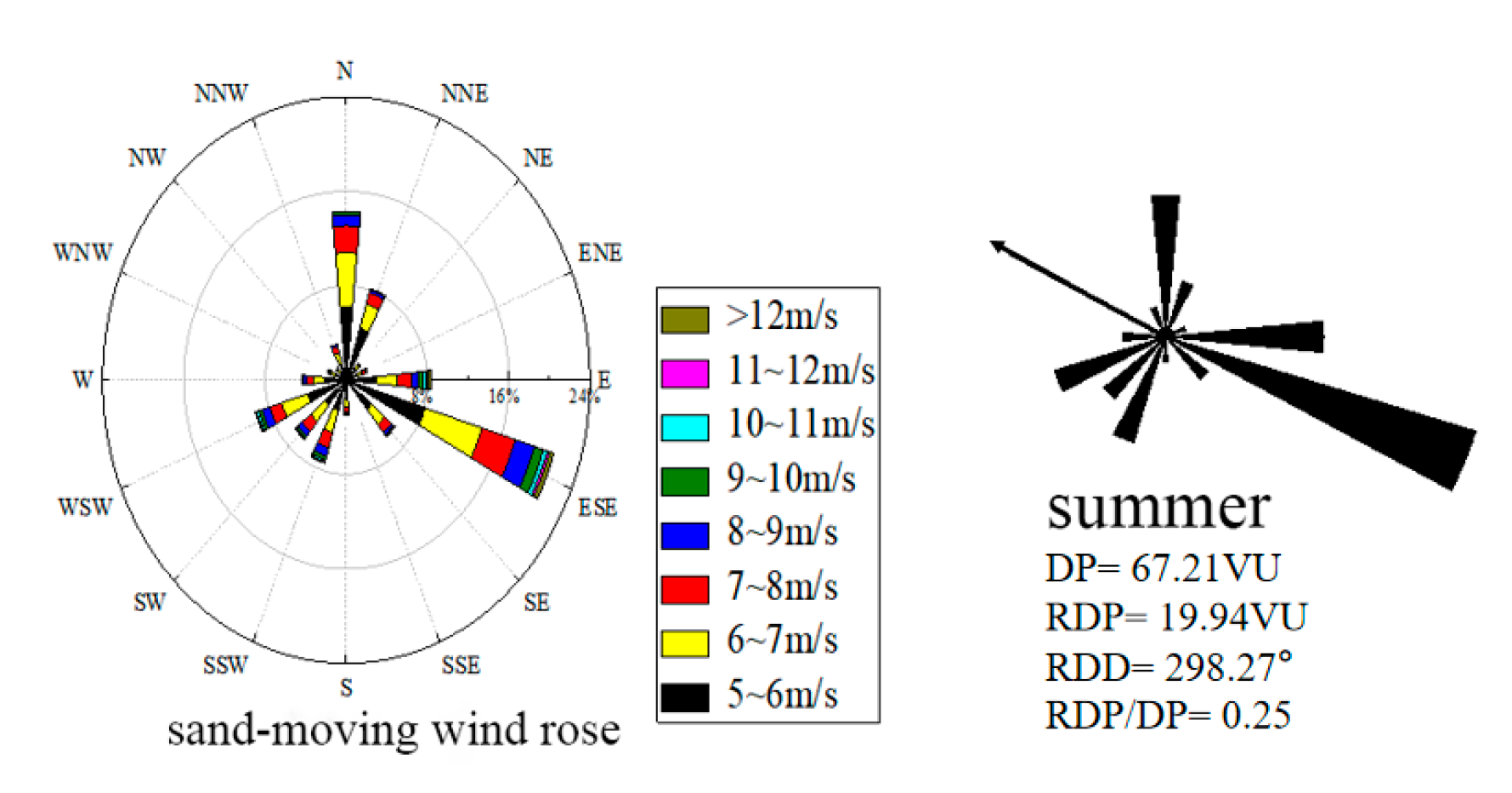


| Constraint Type | |
|---|---|
| Inlet | velocity-inlet |
| Outlet | outflow |
| Top vall | symmetry |
| Two sidewalls | symmetry |
| Bottom wall | wall |
Publisher’s Note: MDPI stays neutral with regard to jurisdictional claims in published maps and institutional affiliations. |
© 2022 by the authors. Licensee MDPI, Basel, Switzerland. This article is an open access article distributed under the terms and conditions of the Creative Commons Attribution (CC BY) license (https://creativecommons.org/licenses/by/4.0/).
Share and Cite
Li, L.; Tao, Z.; Yin, W.; Liu, Z. Numerical Simulation Research on Plane Alignment Parameters of Desert Highway. Appl. Sci. 2022, 12, 9579. https://doi.org/10.3390/app12199579
Li L, Tao Z, Yin W, Liu Z. Numerical Simulation Research on Plane Alignment Parameters of Desert Highway. Applied Sciences. 2022; 12(19):9579. https://doi.org/10.3390/app12199579
Chicago/Turabian StyleLi, Liangying, Zhizhong Tao, Wenhua Yin, and Zhibo Liu. 2022. "Numerical Simulation Research on Plane Alignment Parameters of Desert Highway" Applied Sciences 12, no. 19: 9579. https://doi.org/10.3390/app12199579





